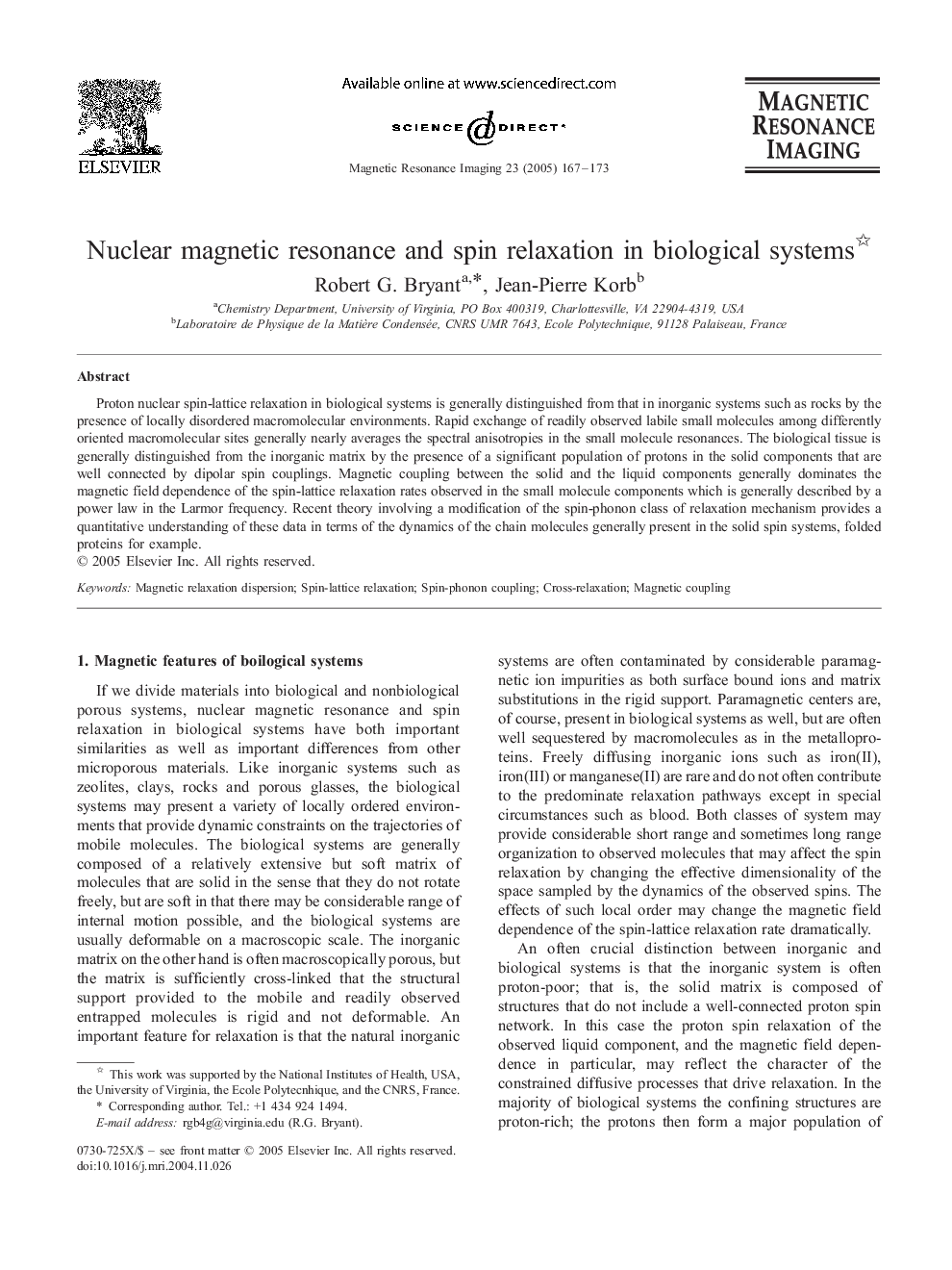| Article ID | Journal | Published Year | Pages | File Type |
|---|---|---|---|---|
| 10712959 | Magnetic Resonance Imaging | 2005 | 7 Pages |
Abstract
Proton nuclear spin-lattice relaxation in biological systems is generally distinguished from that in inorganic systems such as rocks by the presence of locally disordered macromolecular environments. Rapid exchange of readily observed labile small molecules among differently oriented macromolecular sites generally nearly averages the spectral anisotropies in the small molecule resonances. The biological tissue is generally distinguished from the inorganic matrix by the presence of a significant population of protons in the solid components that are well connected by dipolar spin couplings. Magnetic coupling between the solid and the liquid components generally dominates the magnetic field dependence of the spin-lattice relaxation rates observed in the small molecule components which is generally described by a power law in the Larmor frequency. Recent theory involving a modification of the spin-phonon class of relaxation mechanism provides a quantitative understanding of these data in terms of the dynamics of the chain molecules generally present in the solid spin systems, folded proteins for example.
Keywords
Related Topics
Physical Sciences and Engineering
Physics and Astronomy
Condensed Matter Physics
Authors
Robert G. Bryant, Jean-Pierre Korb,
